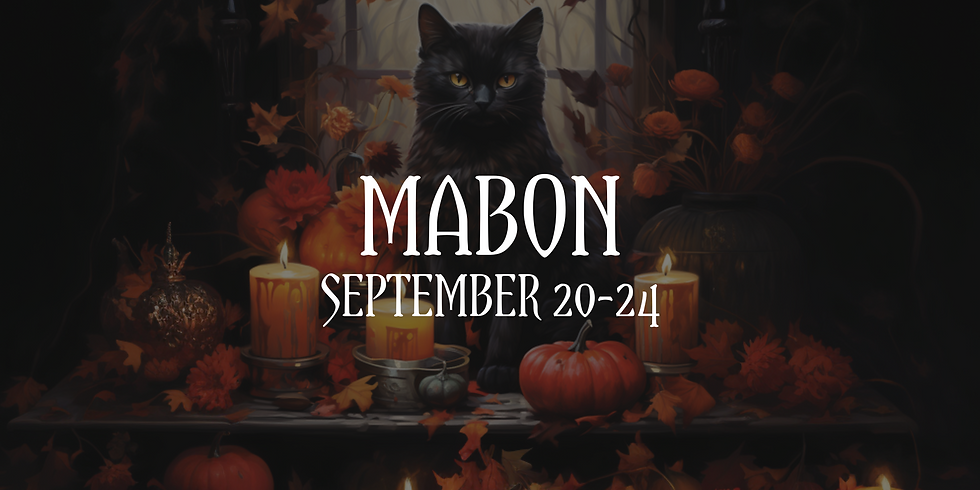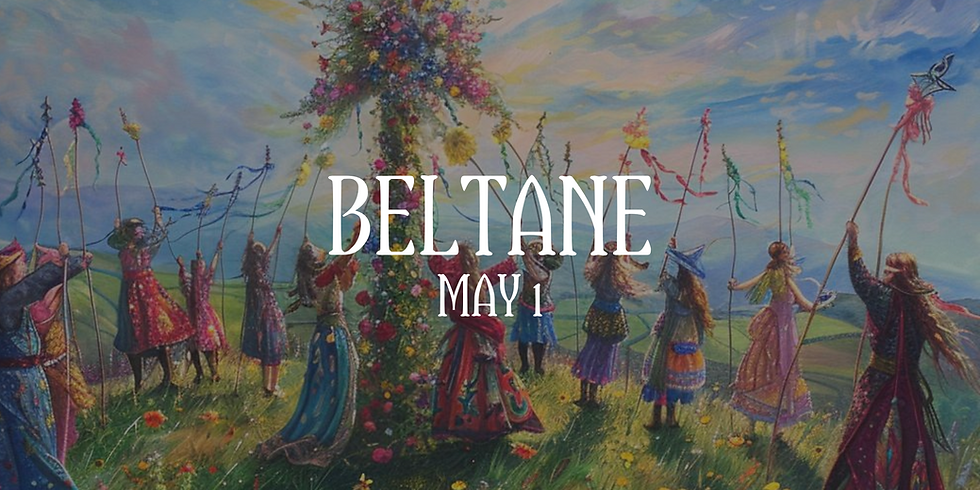MABON: The Wheel of The Year
- Avanjia

- Sep 7, 2023
- 3 min read
Embracing Mabon: Exploring the History, Significance, and Celebration
As the days begin to grow shorter and the air takes on a crisper note, we find ourselves on the cusp of Mabon, a meaningful and ancient festival that marks the autumn equinox. Mabon, also known as the Wiccan Thanksgiving, is a time of reflection, gratitude, and balance. In this blog post, we'll delve into the rich history, significance, and ways to celebrate this magical and transitional season.

The Origins and History of Mabon:
Mabon finds its roots in Celtic traditions and is named after the Welsh deity Mabon ap Modron, who symbolizes the harvest, balance, and the descent into darkness. This festival is celebrated around the autumnal equinox, usually falling around September 21-23 in the Northern Hemisphere. It's a time when day and night are in perfect equilibrium before the scales tip towards longer nights.
The Significance and Meaning of Mabon:
Harvest and Gratitude: Mabon is a time to give thanks for the bountiful harvest and acknowledge the fruits of our labor. It's an opportunity to express gratitude for the abundance in our lives and recognize the interconnectedness between humanity and nature.
Balance and Reflection: Just as nature enters a state of balance during the equinox, Mabon encourages us to find harmony within ourselves. It's a chance to reflect on the dualities in our lives, such as light and dark, and embrace the lessons they bring.
Transition and Release: Mabon marks the shift from the active energy of summer to the introspective energy of fall and winter. It's a time to release what no longer serves us and make space for new growth and experiences.
Ritual Ideas to Honor Mabon:
Feast of Thanksgiving: Host a feast using seasonal and locally sourced ingredients. Set a table adorned with autumnal colors and symbols like pumpkins, apples, and leaves. Before eating, take a moment to share what you're thankful for.
Harvest Walk: Take a leisurely walk in nature to observe the changing colors of leaves and the ripening of crops. Collect fallen leaves, acorns, or pinecones to create an altar or decorate your home.
Balance Meditation: Find a quiet space and meditate on the concept of balance. Visualize the scales within you coming into equilibrium, creating a sense of calm and centeredness.
Release Ritual: Write down any negative thoughts, habits, or emotions you wish to release. Burn the paper while visualizing these things leaving your life, making room for positivity.
Candle Magic: Light a candle in colors that symbolize the season, like orange, red, or deep yellow. As you light it, set an intention for the coming months.
How to Celebrate Mabon:
Decorate Your Home: Adorn your living space with autumnal decorations, such as wreaths, garlands, and seasonal centerpieces.
Create an Altar: Arrange items that represent the harvest and balance on an altar. Add symbols like candles, leaves, crystals, and grains.
Give Back: Consider donating food or volunteering at a local food bank to honor the spirit of abundance by helping those in need.
Connect with Loved Ones: Share the significance of Mabon with friends and family, and gather for a celebration that includes storytelling, feasting, and gratitude sharing.
Mabon is a time to embrace the changing seasons, reflect on the journey of the past months, and welcome the transformative energy of autumn. By understanding the history and significance of this festival, you can create meaningful rituals that connect you to the rhythms of nature and your own inner balance. Whether through a feast, meditation, or simple nature walk, celebrating Mabon allows us to be present in the moment and cultivate a sense of harmony with the world around us.





.png)


